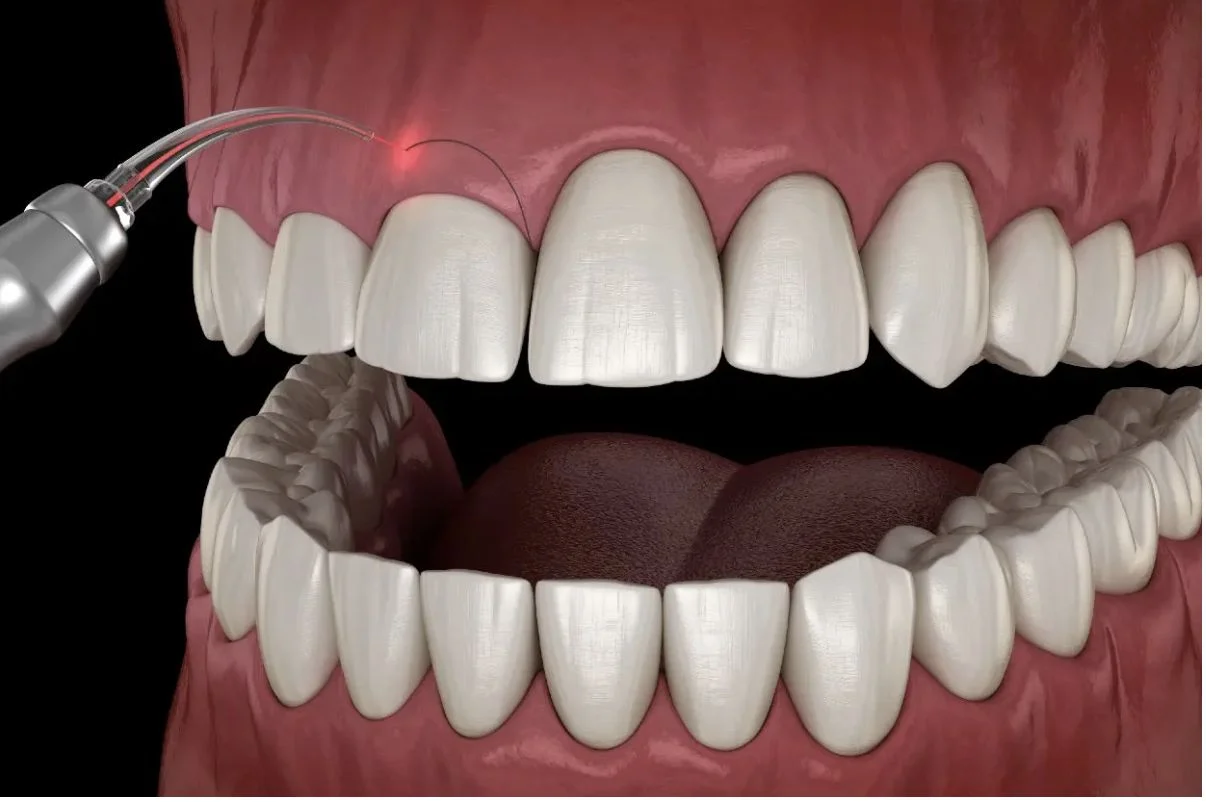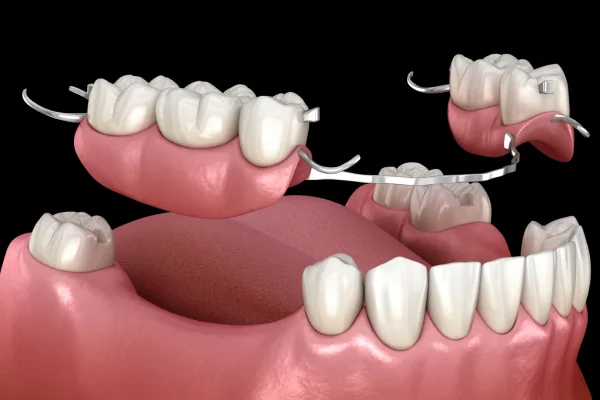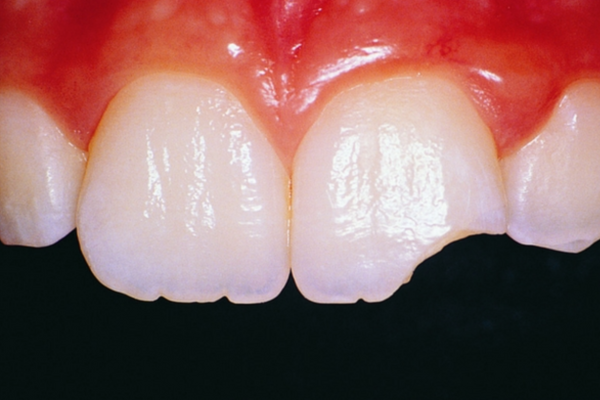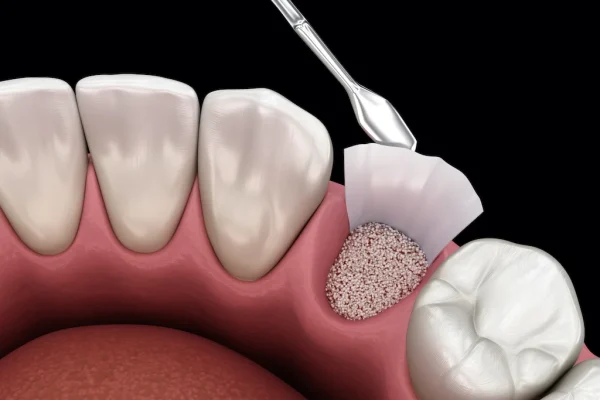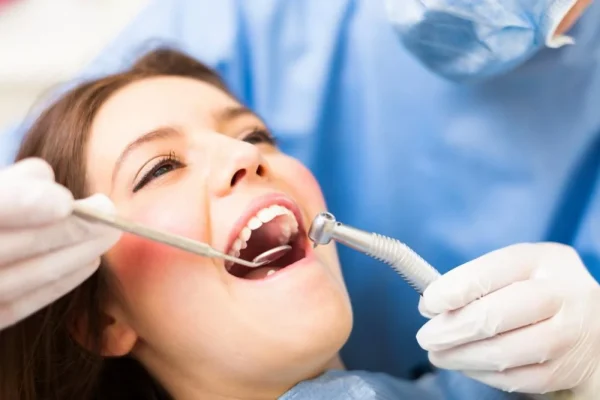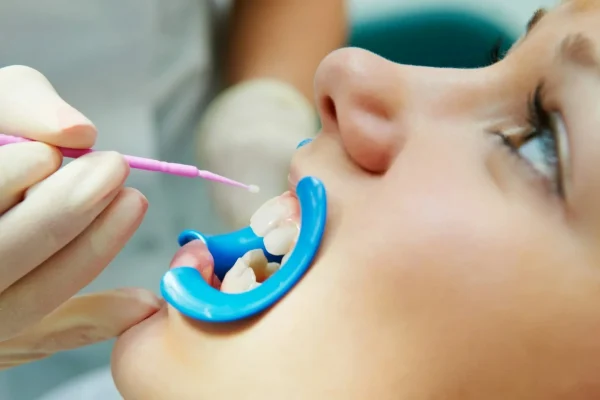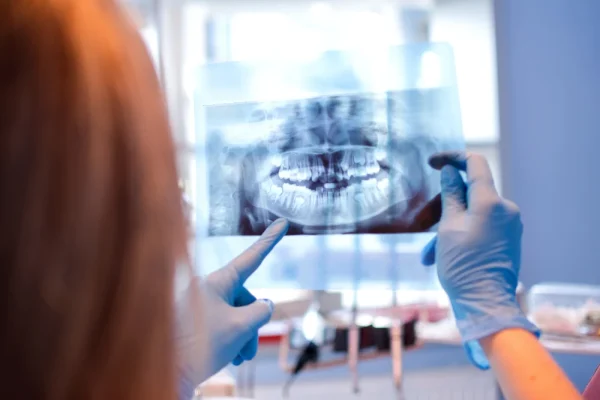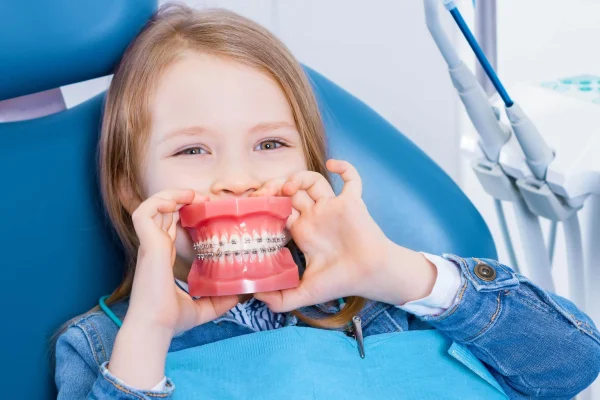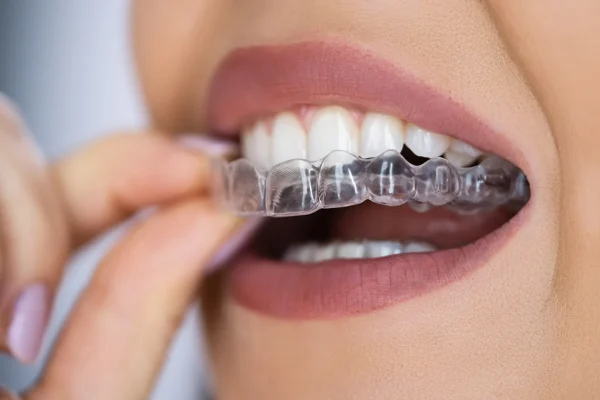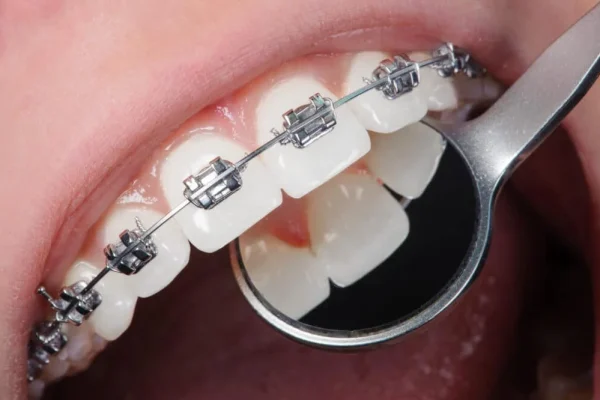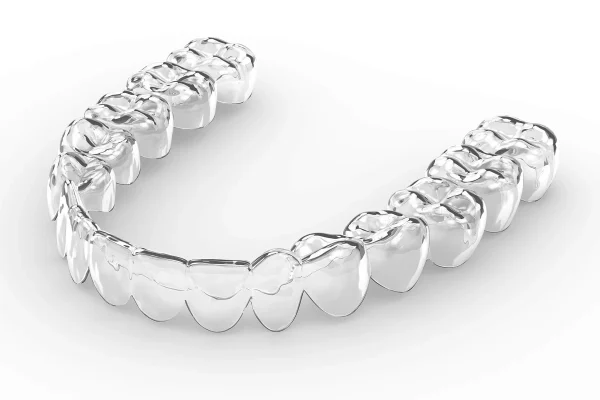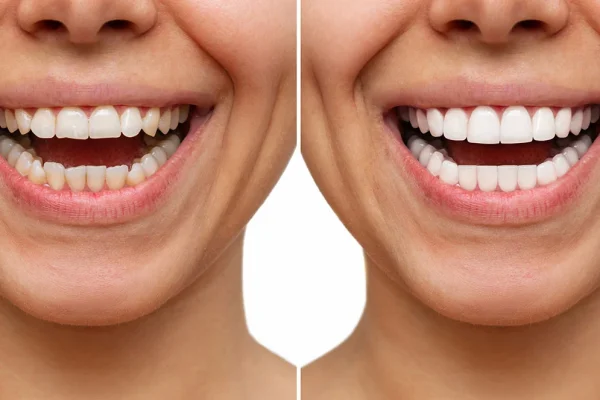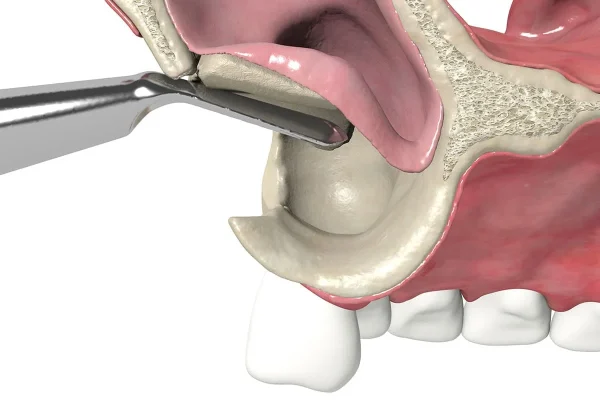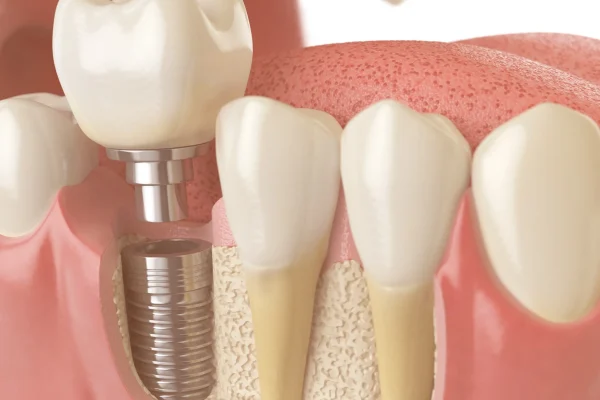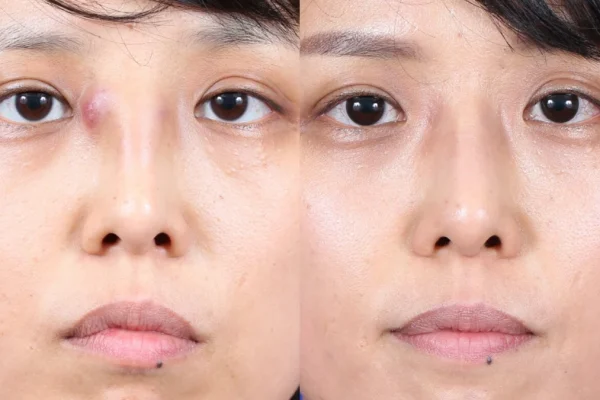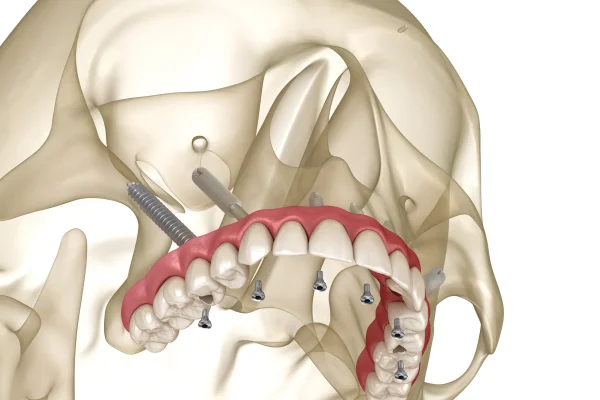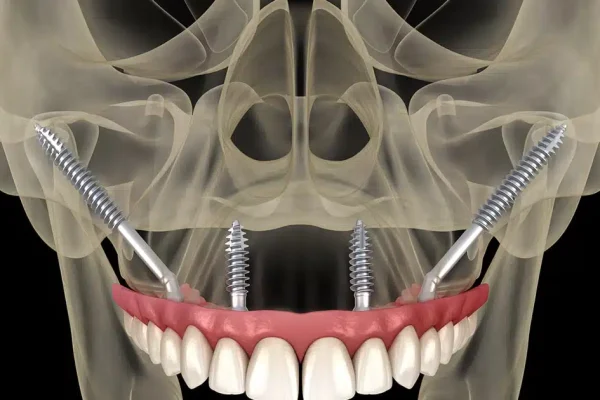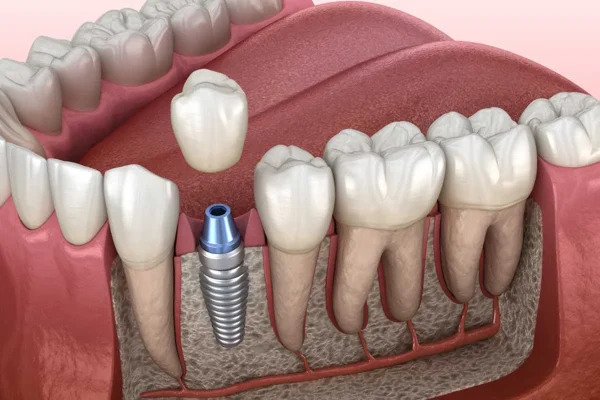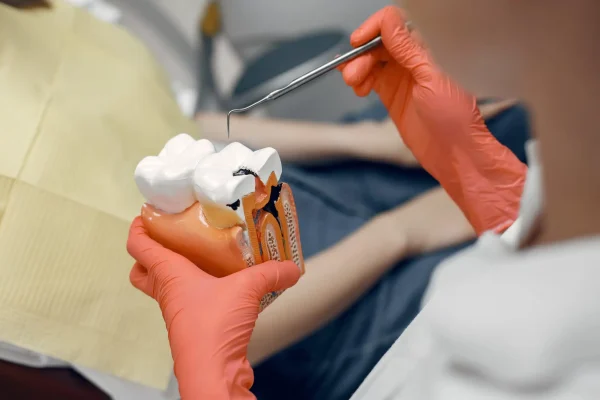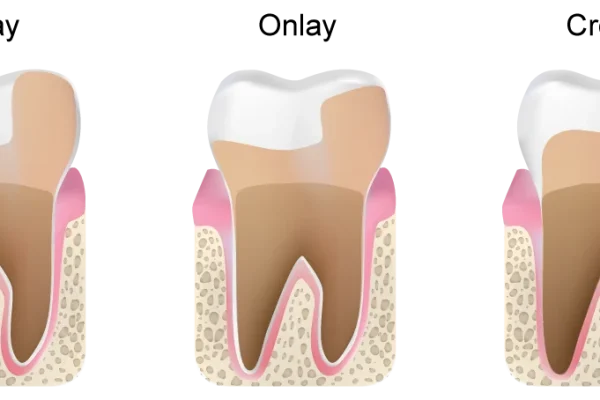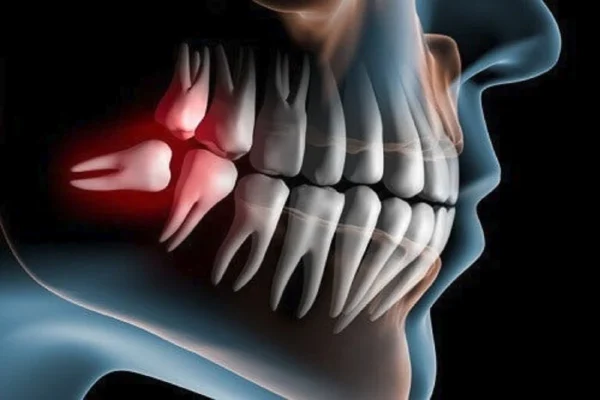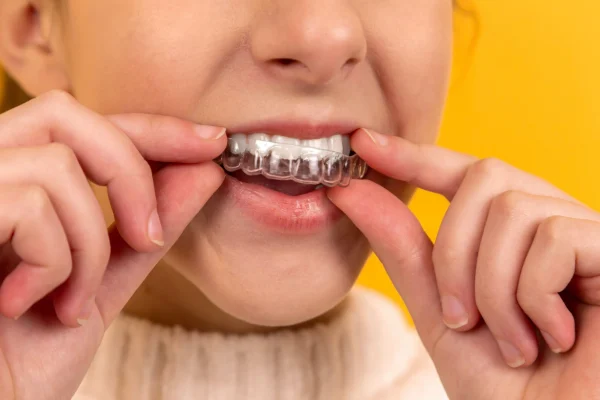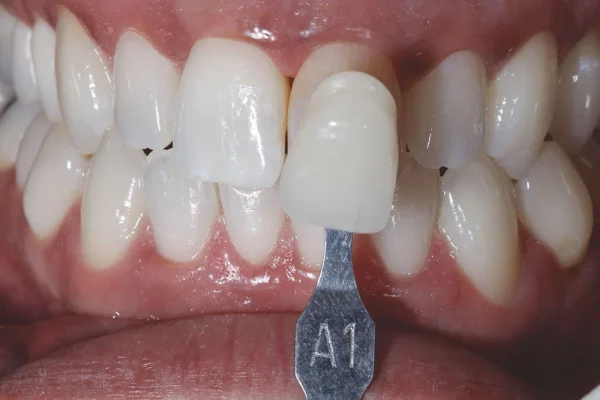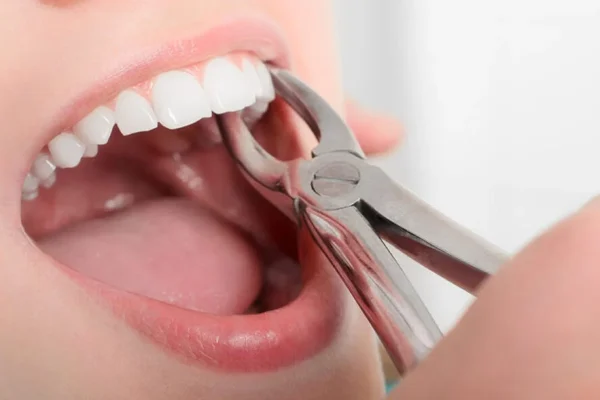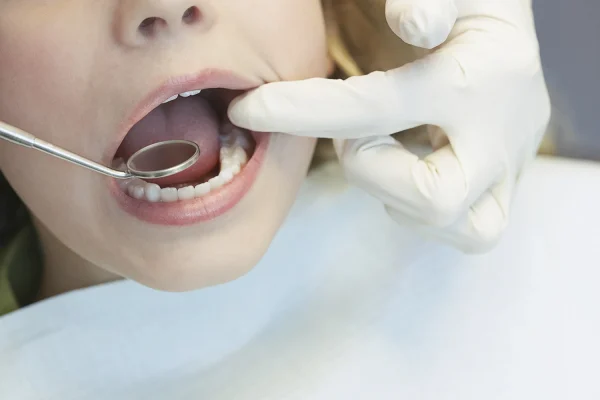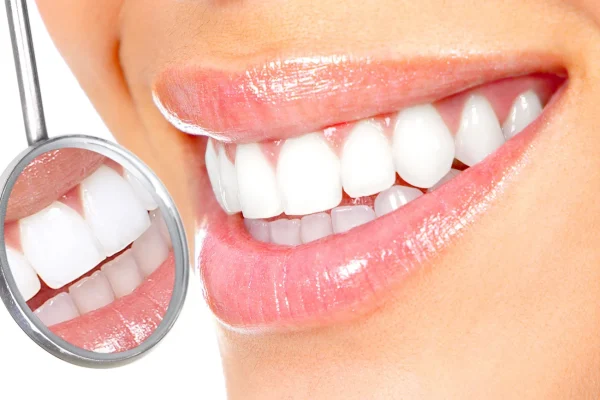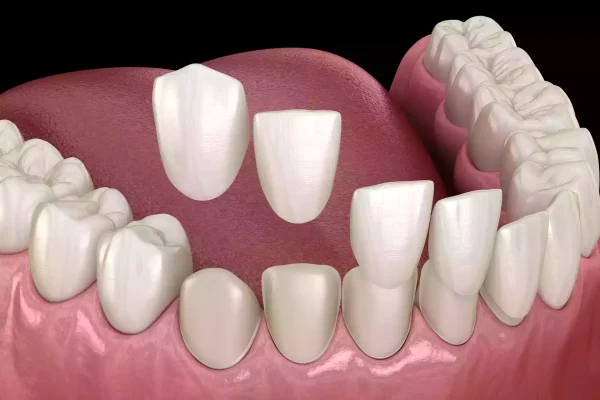What Is Gum Contouring and What Does It Do for Your Smile?
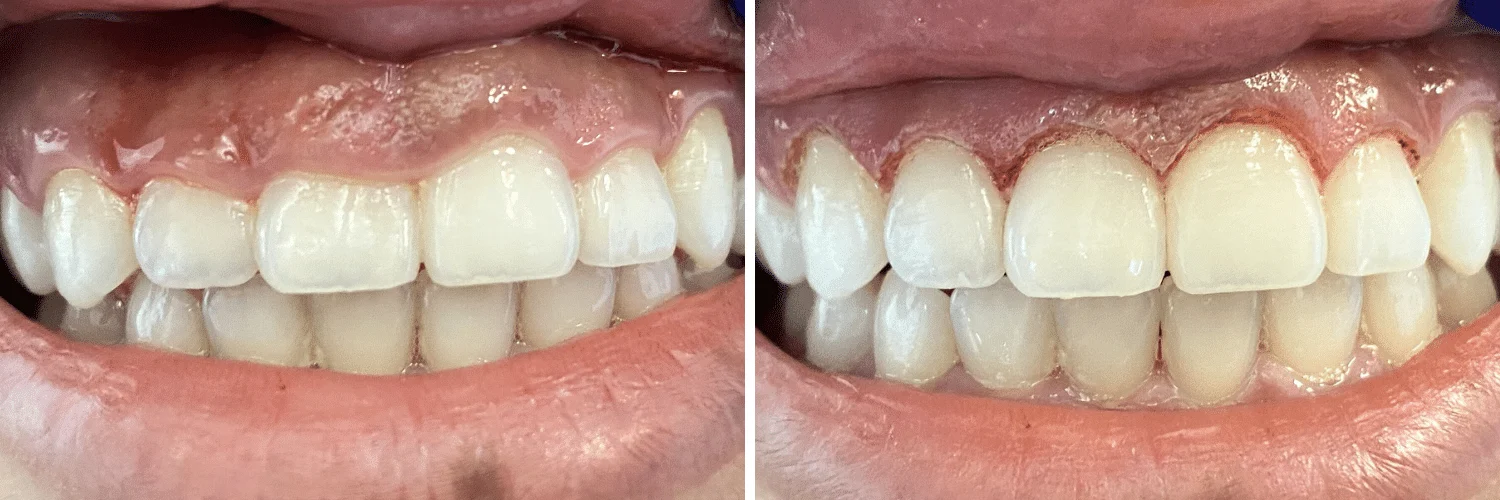
If you’ve ever felt like your smile shows too much gum or that your teeth look unusually short, gum contouring might be the solution you didn’t know you needed. Also known as gingival sculpting, gum reshaping, or gingivoplasty, this cosmetic dental procedure is designed to redefine your gum line and enhance the overall harmony between your teeth and gums.
Gum contouring is both an aesthetic and, in some cases, a medically necessary treatment. At its core, it involves reshaping the soft gum tissues that frame your teeth. If your gums are uneven, overly prominent, or cover too much of your teeth, this procedure can help by removing excess gum tissue. On the other hand, for people with receding gums, it may involve adding tissue through grafting to restore a healthy gumline.
Many people seek gum contouring simply to boost the appearance of their smile. A gummy smile, technically referred to as excessive gingival display, can make teeth appear small or square, and may cause self-consciousness in social settings or photos. For others, however, the need may be more clinical — such as when gum overgrowth interferes with proper oral hygiene or leads to the buildup of bacteria in deep periodontal pockets.
This treatment has evolved significantly thanks to advances in dental lasers. Instead of using a scalpel, laser gum contouring uses a soft tissue laser that gently removes gum tissue while sealing blood vessels at the same time. This makes the process less painful, virtually blood-free, and allows for faster healing.
Whether your concern is big gums, small teeth, or an asymmetrical smile, gum contouring is a precise, customizable procedure that offers transformative results — often in a single visit. It’s suitable for a wide range of patients, but a consultation is always necessary to determine if it’s right for you based on your gum type, bone level, and overall dental health.
Why Do Some People Have Large Gums and Small Teeth?
What Causes Big Gums and Small Teeth?
A smile dominated by gums and overshadowed teeth — often called a gummy smile — can stem from a variety of genetic and anatomical factors. While there’s no single cause, most cases are the result of a mismatch between the size of the teeth and the way the gums or jaw develop.
One common factor is gingival hyperplasia, which refers to an overgrowth of gum tissue that can cover too much of the tooth surface. This condition may be hereditary or brought on by certain medications, including those used to treat epilepsy, blood pressure, or immune system conditions. Another possibility is gingival hypertrophy, where the gum tissue becomes enlarged or thickened over time, again making teeth appear shorter than they actually are.
A hyperactive upper lip can also play a role. In some people, the upper lip lifts too much when smiling, revealing more gum than usual — even when the teeth are appropriately sized. Similarly, maxillary excess, a condition where the upper jaw is vertically overdeveloped, can cause the gums to bulge and dominate the smile.
Another contributing factor is simply the natural shape and size of the teeth. Some individuals naturally have teeth that are shorter or rounder in proportion, or their teeth may not have fully erupted past the gumline, leading to a smile where gums take center stage.
Can Small Teeth Be Corrected Along with Gums?
Absolutely — one of the most effective approaches to enhancing smile aesthetics is combining gum contouring with tooth reshaping procedures such as tooth contouring, veneers, or composite bonding.
Tooth contouring (also called enameloplasty) involves carefully polishing small areas of enamel to create more symmetry and balance. This subtle reshaping can elongate or refine teeth that appear too small or uneven — especially after gum contouring has revealed more tooth surface.
For more dramatic transformations, porcelain veneers or composite bonding are ideal. These treatments not only increase the length and width of the teeth, but also correct other imperfections such as discoloration or mild crowding. When used in combination with gum contouring, they can dramatically improve proportion, balance, and the overall harmony between gums, teeth, and lips.
By addressing both the gumline and the teeth, patients can achieve a more natural, confident, and aesthetically pleasing smile — one that feels proportionate and enhances facial features without looking “overdone.”
What Happens During a Gum Contouring Procedure?
Gum contouring — whether for cosmetic refinement or medical necessity — is a relatively straightforward dental procedure. It’s designed to reshape the gumline, remove excess tissue, or correct uneven gum levels that affect the appearance and health of your smile. The entire process is typically done in a single visit and performed by a cosmetic dentist or periodontist.
Initial Consultation and Smile Design
Before anything else, you’ll have a detailed consultation with your dental provider. This step is crucial in developing a personalized smile design. Your dentist will:
- Examine your oral health, checking for gum disease, decay, or infections that must be treated before the procedure.
- Assess the gum-to-tooth ratio, lip movement, and facial bone structure.
- Use digital imaging or simulation software to show a preview of your expected results.
- Determine if laser gum contouring or scalpel surgery is the best technique based on your gum type and desired outcome.
If tooth contouring, veneers, or whitening are part of your overall smile makeover, those will be factored into the treatment plan as well.
The Procedure: What to Expect in the Chair
On the day of your gum contouring appointment, here’s what happens:
- Local anesthesia is administered to numb the gums and surrounding area. In some cases, sedation dentistry is also available for patients with anxiety.
- Your dentist will mark the new desired gumline using a pen or laser guide.
- Using a scalpel or a soft tissue laser, the dentist carefully removes and reshapes the excess gum tissue. The laser method is often preferred for its precision, minimal bleeding, and faster recovery.
- If needed, your dentist may remove small amounts of bone under the gum to prevent regrowth and ensure a permanent result (common in surgical gum lifts or crown lengthening procedures).
- In traditional methods, sutures may be placed; however, laser contouring typically seals tissues instantly and doesn’t require stitches.
The entire process usually takes 1 to 2 hours, depending on how many teeth are being treated and whether bone recontouring is involved.
Laser vs. Scalpel: What’s the Difference?
- Laser gum contouring is considered less invasive and more comfortable for most patients. It reduces bleeding, avoids stitches, and speeds up healing time.
- Scalpel-based contouring may be used in more complex cases or when significant tissue and bone removal is needed.
Most patients are surprised at how quick and comfortable the procedure is — and are even more thrilled with the immediate results.
Is Gum Contouring Painful or Risky?
One of the most common concerns people have before undergoing gum contouring is: Does it hurt? The good news is that gum contouring, especially when done using laser technology, is a minimally invasive procedure with very little discomfort both during and after treatment.
Does Gum Contouring Hurt During or After the Procedure?
Gum contouring is performed under local anesthesia, which means the area is completely numb during the procedure. You won’t feel pain while your dentist or periodontist reshapes your gumline. If you’re nervous or sensitive to dental work, some clinics also offer sedation options to keep you relaxed throughout.
Once the anesthesia wears off, you may experience:
- Mild soreness
- Tenderness
- A slightly swollen feeling in the treated areas
These side effects are typically mild and short-lived, especially if a soft tissue laser was used. Most patients manage post-procedure discomfort easily with over-the-counter pain relievers like ibuprofen or acetaminophen. Ice packs can also help reduce swelling in the first 24 hours.
Avoid aspirin, as it can increase the risk of bleeding.
Laser contouring has a clear advantage here — it seals blood vessels as it works, meaning less bleeding, no stitches, and a faster recovery overall.
What Are the Potential Complications?
Like any dental procedure, gum contouring carries a few potential risks, but these are rare — especially when performed by an experienced provider. Possible complications include:
- Infection: Usually avoided with proper hygiene and/or prescribed antibiotic rinses
- Gum regrowth: Especially if the underlying bone structure wasn’t addressed during treatment
- Tooth sensitivity: Temporary, if deeper tissue or roots are exposed
- Irregular gumline: If not sculpted precisely (which is why experience matters)
To minimize risks, it’s essential to:
- Follow post-operative care instructions
- Attend your follow-up appointment
- Choose a provider skilled in laser or surgical contouring techniques
In summary, gum contouring is generally safe, predictable, and well-tolerated when performed by a trained professional.
How Long Does It Take to Recover from Gum Contouring?

Recovery from gum contouring is generally quick and uncomplicated—especially when laser technology is used. Most people can return to their normal routine within a day or two, but complete healing of the gum tissue may take 7 to 14 days, depending on the extent of the reshaping.
Healing Time: What to Expect
Immediately after the procedure, it’s normal to experience some mild soreness, swelling, or tenderness. These symptoms are usually minimal and can be effectively managed with:
- Over-the-counter pain relievers (avoid aspirin)
- Cold compresses applied to the outside of the mouth in 15–20 minute intervals
- Antibacterial mouthwash if prescribed to prevent infection
If a soft tissue laser was used, healing tends to be faster and smoother because the laser cauterizes as it works, sealing blood vessels and reducing the risk of bleeding and swelling.
Post-Op Instructions for a Smooth Recovery
To ensure a successful recovery, most dentists will recommend the following:
- Stick to soft foods for 2–3 days (think yogurt, mashed potatoes, smoothies, soup, eggs)
- Avoid spicy, crunchy, or hard foods that may irritate healing gums
- Brush and floss gently, using a soft-bristled toothbrush
- Rinse your mouth with lukewarm salt water or a prescribed antibacterial rinse
Avoid smoking or drinking alcohol during recovery, as both can delay healing and increase the risk of infection.
When Can I Return to Work or School?
Most patients can return to work, school, or normal daily activities within 24–48 hours. If sedation was used, you’ll need someone to drive you home, and you may feel drowsy for the rest of the day—so be sure to plan accordingly.
Follow-Up Care Is Important
You’ll usually have a follow-up appointment scheduled within a week to ensure your gums are healing properly and to check for signs of infection or regrowth. During this visit, your dentist may also assess if any further touch-ups or adjustments are needed.
Is Gum Contouring a Permanent Solution?
Gum contouring can offer long-lasting, transformative results—but whether the results are permanent depends on several factors, especially the technique used and your unique gum and bone anatomy.
Are Gum Contouring Results Permanent?
In most cases, yes—gum contouring results are considered permanent. The reshaped gumline will typically stay in its new position, especially when done using a laser, which not only removes excess gum tissue but also seals blood vessels and minimizes trauma.
However, in some cases, gum tissue may regrow slightly, particularly if the underlying bone wasn’t modified. This is more common when only surface-level tissue is removed and no changes are made to the supporting bone beneath the gums.
The Role of Bone Level in Long-Term Results
Your bone level plays a crucial role in determining where the gum tissue naturally rests. If your gums are simply trimmed without altering the bone, there’s a higher chance they’ll regrow to their original position over time.
That’s where crown lengthening comes in—a more invasive surgical option that includes reshaping both gum and bone tissue to create more stable, lasting results.
Laser Gum Contouring vs Crown Lengthening
| Procedure | Invasiveness | Recovery Time | Permanence |
| Laser Gum Contouring | Low | 7–10 days | May be semi-permanent |
| Crown Lengthening | Moderate–High | 2–3 weeks | More permanent |
Laser contouring is less invasive, more affordable, and has a faster recovery, but crown lengthening offers a more definitive gumline repositioning in cases where stability and long-term results are essential.
Bottom Line: What to Expect Long-Term
If your gum contouring is done correctly—especially by an experienced dentist or periodontist—your smile can maintain its beautiful new proportions for many years to come. Just be sure to maintain good oral hygiene, attend regular check-ups, and follow all aftercare guidelines to keep your gums healthy and your results intact.
Am I a Good Candidate for Gum Contouring?
Gum contouring isn’t just about aesthetics—it’s a procedure that requires the right foundation for long-term success. Whether you’re looking to reduce the appearance of large gums and small teeth, fix an uneven gumline, or enhance your smile for confidence, understanding if you’re a suitable candidate is key.
Who Is Gum Contouring For?
You may be a good candidate for gum reshaping or gingivoplasty if:
- You have a gummy smile (excess gum showing).
- Your teeth look short due to overgrown gum tissue.
- You want to even out your gumline for symmetry.
- Your gums are healthy, and you’re free of gum disease.
- You maintain good oral hygiene and attend regular cleanings.
Cosmetic gum contouring is often paired with veneers, bonding, or tooth contouring to enhance both tooth shape and gum appearance—creating a balanced, natural-looking smile.
Who Should Avoid Gum Contouring?
This procedure may not be suitable for you if:
- You have active gum disease or untreated cavities.
- Your gums bleed frequently or are inflamed.
- You have deep periodontal pockets that make tissue reshaping difficult.
- You’re a smoker or have poor oral hygiene habits (which can slow healing).
In these cases, your dentist will likely recommend treating underlying oral health issues first, before considering any cosmetic work.
What Does Your Dentist Assess Before Treatment?
A skilled provider will:
- Examine the bio-type of your gums (thin or thick).
- Measure periodontal pocket depth.
- Evaluate your jaw and lip position during smiling.
- Check for enough exposed tooth structure to safely sculpt the gumline.
This ensures the best possible outcome tailored to your natural anatomy and smile goals.
What Are the Benefits of Gum Contouring for Aesthetic & Health?
Gum contouring—also known as gingival sculpting—offers more than just a cosmetic upgrade. Whether you’re correcting big gums and small teeth or simply refining your smile’s symmetry, the benefits go beyond skin-deep.
Aesthetic Advantages
- Improved Tooth-to-Gum Ratio
One of the most common reasons patients choose gum contouring is to fix the appearance of short teeth and large gums. By reshaping the gumline, your teeth appear longer and more proportionate—creating a cleaner, more youthful smile. - Enhanced Symmetry
Uneven gumlines can make even straight teeth look off-balance. Gum contouring helps align the gum tissue across your smile, boosting visual harmony and making your teeth look more evenly shaped. - Confidence Boost
Whether you’re self-conscious about a gummy smile or simply want a more photogenic grin, gum reshaping helps patients smile more freely in both personal and professional settings. - Complements Other Cosmetic Treatments
When combined with veneers, tooth contouring, or bonding, gum contouring can amplify the results—providing that perfect frame for your newly shaped or whitened teeth.
Oral Health Benefits
- Reduced Gum Pockets
Excess gum tissue can harbor bacteria, increasing the risk of periodontal disease. Gum reshaping can reduce these pockets, making it easier to brush and floss effectively. - Better Hygiene Access
When gums no longer cover excessive portions of the teeth, it becomes easier to maintain oral hygiene—especially around the gumline, where plaque tends to accumulate. - Less Risk of Inflammation
With a cleaner and more accessible gumline, there’s typically a lower risk of chronic gum inflammation or infection, contributing to better long-term dental health. - Lip-to-Gum Alignment
Gum contouring can correct imbalances between how much gum shows when you smile. This improves facial aesthetics and often eliminates the need for more invasive procedures—like lip repositioning or orthognathic surgery.
What Are the Disadvantages or Limits of Gum Contouring?

While gum contouring can dramatically improve the appearance of a gummy smile and enhance overall oral aesthetics, it’s important to understand the limitations and potential downsides of the procedure—especially if you’re dealing with large gums and small teeth or considering it as a permanent solution.
Gum Regrowth Is Possible
One of the most common concerns is gum regrowth. Since laser gum contouring does not alter the underlying bone (unlike surgical crown lengthening), there’s a chance the gums may eventually return to their original level. This is especially true if the bone level under the gums isn’t reshaped when needed. However, this varies from person to person, and the regrowth is typically minimal if the procedure is done correctly.
Not Suitable for Everyone
Some individuals may not be ideal candidates for gum contouring. Those with:
- Untreated gum disease
- Deep periodontal pockets
- Poor oral hygiene habits
…may need to address those issues first before considering gum reshaping. Also, those with very thin or delicate gums (known as a “thin biotype”) may face higher risks of complications or limited results.
May Require Additional Procedures
In cases of extreme gummy smiles, especially when caused by maxillary excess (overgrowth of the upper jaw) or a hyperactive upper lip, gum contouring alone may not be enough. In these situations, a combination of treatments—such as Botox, lip repositioning, or veneers—may be recommended for a more balanced result.
Less Effective Without Bone Adjustment
As mentioned earlier, laser contouring doesn’t modify the bone level beneath the gum. This means:
- The gumline might not stay in its new position permanently.
- Crown lengthening, a more invasive alternative, might be needed for longer-lasting results in certain cases.
Mild Discomfort or Sensitivity
Although most procedures are painless with local anesthesia, some people may experience:
- Mild swelling
- Tenderness
- Temporary tooth sensitivity
These side effects are typically short-lived and manageable with OTC medications and proper aftercare.
What Are the Alternatives to Gum Contouring?
While gum contouring is a highly effective treatment for creating a balanced gum-to-tooth ratio, it’s not the only solution available—especially for individuals dealing with big gums and small teeth, short teeth, or cases where gum overgrowth stems from deeper anatomical or medical causes.
What Is Crown Lengthening and How Is It Different?
Crown lengthening is a more invasive surgical procedure that reshapes both the gum tissue and the underlying bone. It’s often recommended when:
- Gum regrowth is a concern (especially in cases with deep periodontal pockets).
- You need a more permanent repositioning of the gumline.
- You’re preparing for restorative procedures like crowns or veneers and need more tooth structure exposed.
Pros of Crown Lengthening:
- More definitive and long-lasting results.
- Addresses both soft tissue and bone level, preventing gum regrowth.
- Can support further cosmetic or restorative treatments.
Cons:
- Longer recovery time (compared to laser gum contouring).
- Involves stitches, possible swelling, and temporary discomfort.
- Higher cost due to surgical nature and potential follow-up treatments.
What Are Other Options Like Botox or Veneers?
If you’re not ready for surgery or if the gummy smile is due to lip movement rather than gum overgrowth, there are non-surgical alternatives to explore:
Botox for Gummy Smile:
- Botox injections relax the hyperactive upper lip, limiting how high it rises when you smile.
- Effects last around 3–4 months and require reapplication.
- Great for mild to moderate gummy smiles caused by lip dynamics, not gum overgrowth.
Veneers:
- Thin, custom-made shells that fit over the front of your teeth.
- Ideal for small teeth or teeth that appear too short after gum contouring.
- Can improve shape, color, and overall proportion, especially when combined with gum lifts.
Tooth Contouring and Bonding:
- Tooth reshaping can refine the look of your smile by adjusting the enamel.
- Bonding adds composite material to enlarge or reshape small teeth—complementing gum sculpting beautifully.
What’s the Process of Laser Gum Contouring Like?
Laser gum contouring is one of the most modern, minimally invasive techniques available for reshaping the gumline—and it’s quickly become a preferred option for people with big gums and small teeth, especially those looking to correct a gummy smile or achieve a more symmetrical appearance.
Step-by-Step Breakdown: How Laser Gum Contouring Works
- Initial Consultation & Smile Design
Your journey begins with a comprehensive smile assessment. The dentist or periodontist will evaluate your gum-to-tooth ratio, discuss your goals, and often use digital imaging to simulate your new smile. If your gums overshadow your teeth or appear uneven, gum contouring may be recommended as a standalone treatment or as part of a full smile makeover. - Local Anesthesia for Comfort
Before the procedure begins, your dentist will apply a local anesthetic to numb the area. Since the treatment only targets soft tissue, this is usually sufficient to ensure a pain-free experience. - Precise Gum Sculpting with Laser Technology
Using a soft tissue dental laser, your dentist carefully removes excess gum tissue, reshaping the gumline with accuracy. The laser simultaneously seals blood vessels, which results in:- Minimal bleeding
- No need for sutures
- Reduced risk of infection
- Faster healing
- Tissue Smoothing & Final Adjustments
The laser gently smooths and shapes the gums to achieve the most natural and even appearance. This step may also involve fine-tuning for symmetry across your smile. - Immediate Results & Aftercare Instructions
One of the best things about laser gum contouring is that the results are visible immediately. Once the procedure is finished, you’ll receive detailed aftercare guidelines, which usually include:- Eating soft foods for a few days
- Using a saltwater rinse or prescribed mouthwash
- Avoiding vigorous brushing on the treated area
Healing Usually Completes Within 7–10 Days
Most people experience only mild tenderness or swelling for the first couple of days post-treatment. Thanks to the laser’s precision, healing is rapid, and you can usually return to normal activities within 24–48 hours—making it one of the most convenient cosmetic dental procedures available.
Frequently Asked Questions About Gum Contouring
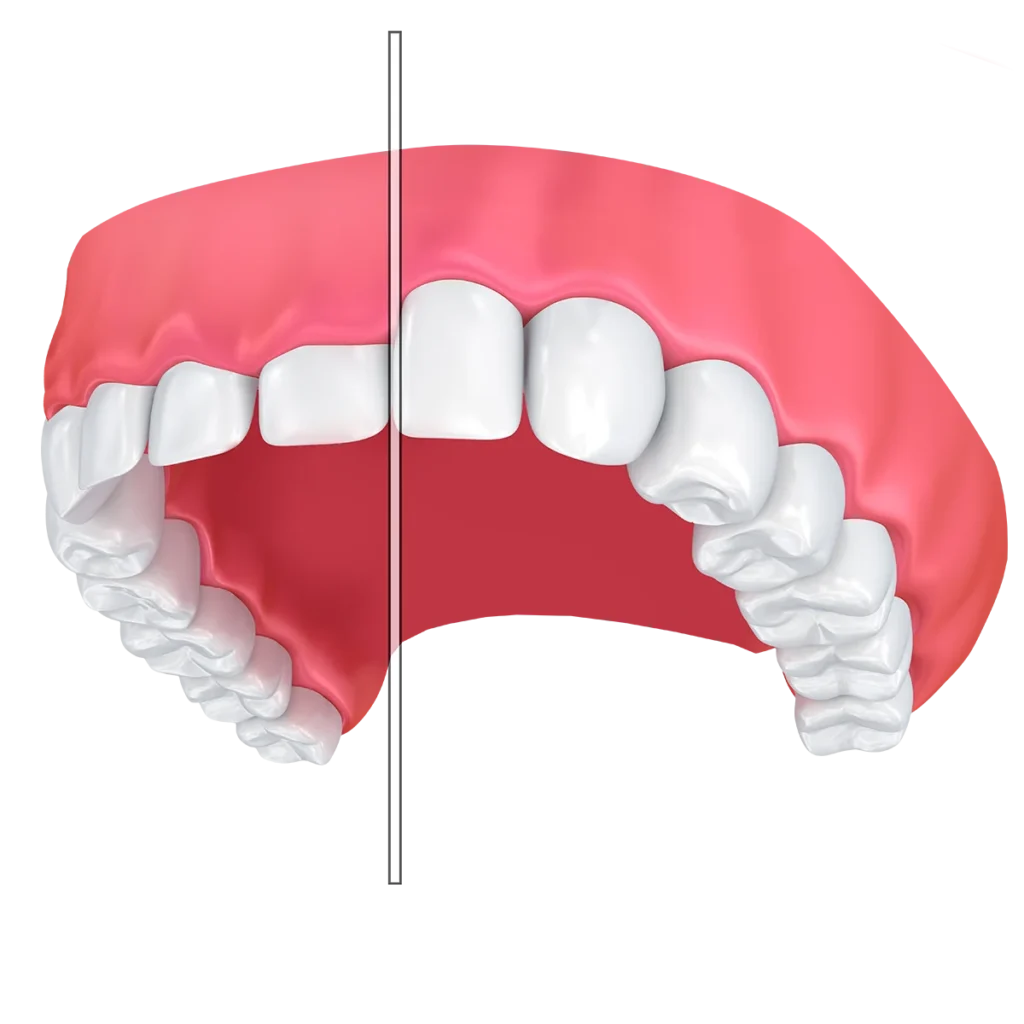
If you’re considering gum reshaping to correct large gums and small teeth, improve symmetry, or fix a gummy smile, it’s natural to have some questions. Here are the most common ones answered:
How Long Does It Take to Recover After Gum Contouring?
Recovery after gum contouring—especially laser gum contouring—is usually quick and smooth. Most patients heal within 7 to 10 days, although this can vary depending on how much tissue was removed and your individual healing response.
You’ll likely be back to work or daily activities within 1 to 2 days, and your dentist may recommend:
- Soft foods (like yogurt, mashed potatoes, or smoothies)
- Avoiding spicy, crunchy, or seeded items
- Gentle brushing with a soft-bristled toothbrush
- Using an antimicrobial rinse if prescribed
Pain is typically mild and manageable with over-the-counter medication like ibuprofen.
Is Gum Contouring Permanent?
Yes, gum contouring results are typically long-lasting—especially when the treatment is done by a skilled provider using a laser. However, there are a few important considerations:
- If only soft tissue is removed and bone beneath the gums is left untouched, there’s a small chance the gums may grow back slightly.
- Procedures like crown lengthening, which involve adjusting the bone level, offer more permanent results in some cases.
Regular dental hygiene and follow-up visits will help maintain your results.
Is Gum Contouring Safe?
Absolutely. Gum contouring is a low-risk procedure when performed by a qualified cosmetic dentist or periodontist. Using soft tissue lasers makes the process even safer by minimizing:
- Bleeding
- Risk of infection
- Healing time
However, it’s not recommended for everyone. If you have active gum disease, deep periodontal pockets, or untreated cavities, your dentist may delay the procedure until your oral health is stable.
Is Gum Contouring Worth It?
For many patients, gum contouring is a life-changing treatment that dramatically improves their smile aesthetics and confidence. It’s especially worth considering if:
- You feel self-conscious about big gums and small teeth
- You want to fix uneven gums or excessive gingival display
- You’re preparing for veneers or other cosmetic treatments
In combination with tooth contouring, veneers, or Botox for gummy smiles, gum contouring can be part of a powerful transformation.

